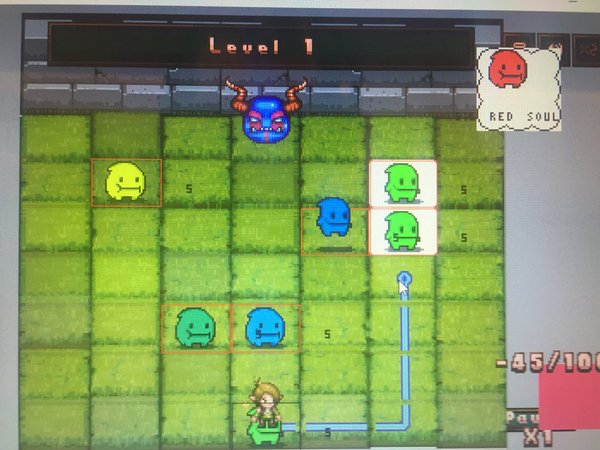Hi everyone! Already 2 weeks out of 12 down! This week have seen great advancement in the project as my work got propelled by the voice of the legendary David Bowie.

Prototypes & Tests
The goal of the week was to refine the games’ rules to find a pleasant balance between randomly mixing ingredient and attempting to create the perfect combination to maximise points. My goal was to get an easy progression in the recipes. I want players to have fun matching practically any ingredients together and get a final recipe out of it instead of forcing strict combinations. The game is primarily about discovery.
I tested a lot of different movement schemes and decided to go with my original plan of dragging tokens around with the mouse or touch screen. I spent a couple of hours polishing this mechanic so it is solid and fluid. It’s almost there. There is also an indicator now that shows when a combination of tokens creates something. This makes for a more fluid and easygoing game experience.

I’ve also prototyped and tested the end conditions and pressure mechanics of the game. I’ve tried turn based, time based and error based. The best option for me at this moment for the score mode is time based. Nevertheless, I don’t want the player to feel too much rush, I want them to be relaxed and have enough time to experiment.
The mechanic is simple, as time goes by the Glutton gets hungrier. You need to make sure that enough food is given to him to lower his hunger or else you’re the one who gets eaten! The monster’s hunger is further satisfied when you give him what he wants. When you give him enough, you move to the next level.
A new Glutton
Talking about the Glutton, I’ve started sketching him on Friday. He was originally supposed to be just a head icon moving around the board. I’ve just recently decided to have a sprite of its full body at its “real” scale instead. Its hulking appearance will be very cool on the board compared to other tokens. Now I just need to figure out how to make it move around properly.

NEXT WEEK
Next week is a big milestone as I will playtest the game with friends and colleagues to see where it needs refinements. If you are making a game yourself, know that planning and committing to do playtests is not only crucial to get feedback but is also a great way to motivate yourself. Working under a deadline do marvels!
For this playtest, I need to make sure there is enough recipes available in score mode for it to last more than 5 minutes. I also should make sure that 1 to 3 puzzle levels are available. I want to test both game modes. Talking about level design, I leave you with some sort of a spoiler 😉 The following are old level design I found this week. I’ll probably rebuild those levels in the game just for the kicks.
The following images show a bit of how I work. I always design on paper before doing anything in the engine. I find doing these analog designs a much easier task. Working with a pen, eraser and paper helps me think and focus.
See you next week. Until then, have fun!





